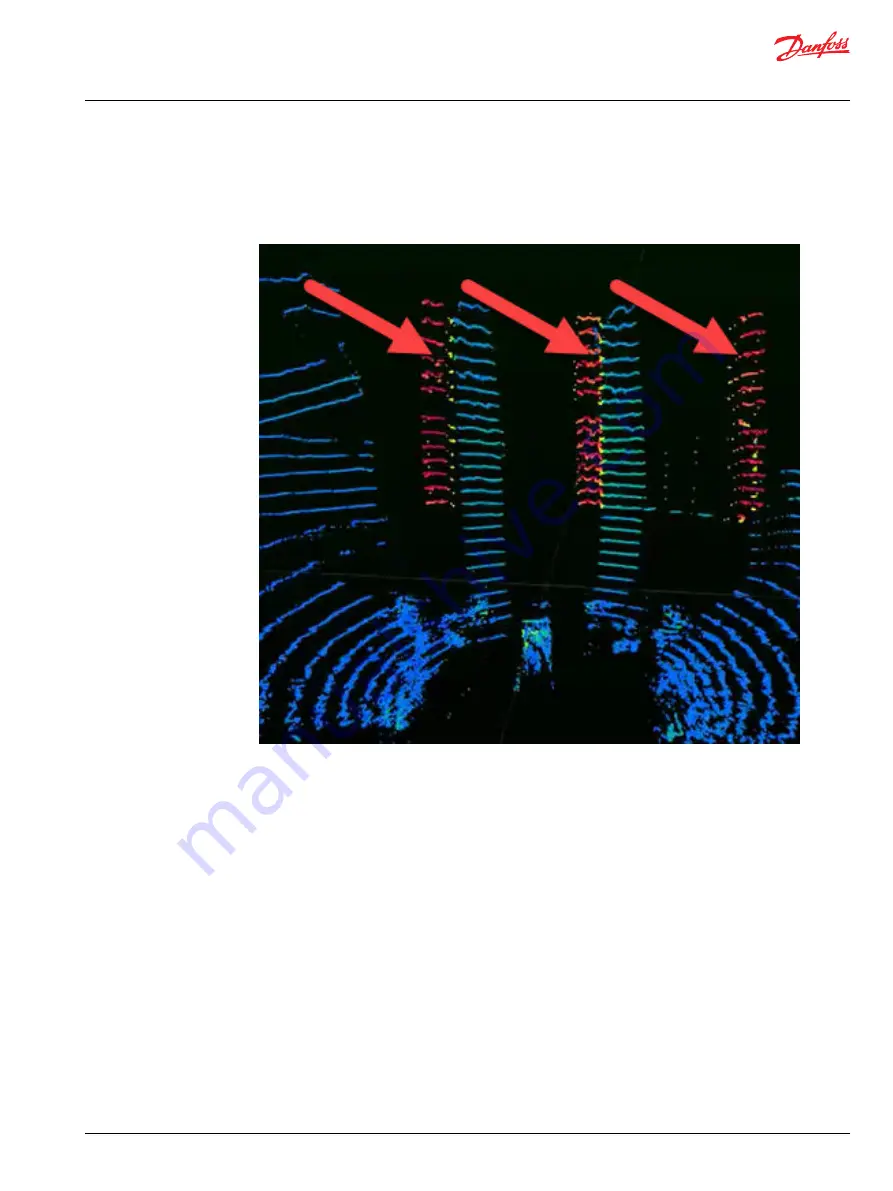
Blooming
Blooming occurs when a LiDAR picks up too much light from a reflective object. When visualized in
Ouster Studio, the reflective area appears in a different color, and the points surrounding the reflective
object vanish, giving a black appearance outlining the object.
The image above shows LiDAR points bouncing off an object that is too reflective, which causes
blooming.
Blooming occurs less with newer LiDAR models. To fix a situation where blooming occurs, try to remove
the reflective object or replace it with something less reflective. Blooming causes missing and inaccurate
data near the reflective objects.
How Ouster LiDAR Sensors Work
Ouster LiDAR hardware uses different conventions than Danfoss hardware and PLUS+1 software. Take
the differences into account when switching between Danfoss's PLUS+1 software and Ouster's software,
Ouster Studio.
Review Ouster's website to see the types of LiDARs available, their accompanying user manual, and
Ouster Studio. Ouster Studio shows what the LiDAR sees and allows users to adjust the settings. The
program can also save the hardware settings, which can be used on another type of Ouster LiDAR
hardware.
The Ouster LiDAR hardware rotates counter-clockwise scanning the surrounding area with up to 262,000
points per rotation. It measures the distance from itself to objects with an accuracy within 3 centimeters.
Use the Ouster LiDAR compliance block to configure the framerate, horizontal resolution, and azimuth
window of the Ouster LiDAR hardware. The framerate sets the number of rotations in one second. The
horizontal resolution sets the number of points scanned in one full rotation, per ring. The azimuth
window limits the horizontal scanning area to a set space.
User Manual
Ouster LiDAR
Introduction
©
Danfoss | March 2023
AQ404281942428en-000103 | 9
























